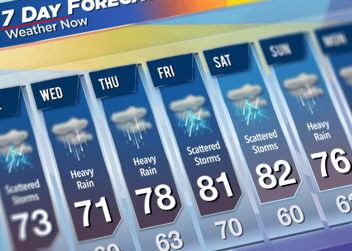So, I’ve prepared a list of 6 important ways you can use weather data to avoid some risk in your bid proposal and competitive bidding process, some you already know about and some that you perhaps haven’t thought about at bid stage. We are now in an era where climate responsible bidding is a necessity. Do you feel you have a climate resilient bid process?
The 6 key points are:
- Using flood maps and data to assess your projects exposure to this extreme weather risk, of all of them the fastest that is rising in the UK
- Leveraging climate data to understand which types of record-breaking weather might hit your particular location, climate change is not uniform across geographies
- Analysing historical weather data to get the most accurate time risk allowance into your bid, something you don’t do very well today
- Putting this data to work against your plan so you can spot the best mitigation strategies for you and your client
- Widening your analysis past the site to spot any bottlenecks caused on transport links by weather
- Your data and project delivery method must be in a way in which all project stakeholders can understand to minimise arguments

1| Using flood maps and data to assess your projects exposure to this extreme weather risk, of all of them the fastest that is rising in the UK
Floods are becoming one of the major risks for construction projects in the UK because of climate change. Increasing rainfall and especially heavy concentrated rainfall is forcing more water into river systems which overtop their banks and flood. There are many parts of the UK that are in these flood zones and so knowing if your site is within one of these zones today or could be in one in the next few years when you are delivering your project is essential.
There is plenty of data out there that you can leverage to understand if you are at risk from flooding and in some cases this data can help you visualise how likely it is that these floods will occur.
If you just want a general idea then a good place to start is Parallel, a visualisation tool using Environment Agency data. If you want more certainty about the type of flooding and likelihood that could happen in your location, then you’ll need to find a more specialist provider. EHAB for example is currently looking at including flood data to incorporate into our platform. This would help you identify exactly how likely you are to suffer from a flood event.
By examining these datasets, you can include provision in your bid and be more prepared for the types of risks you may be taking on when you are delivering your construction project. This will be critical foresight and will enhance your construction services as we experience more flooding now and in the future.
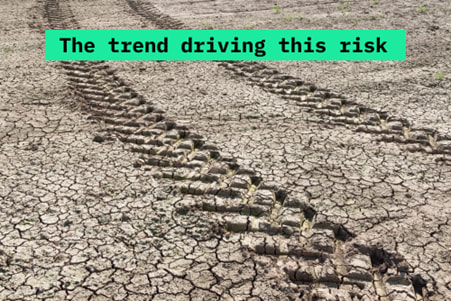
2| Leveraging climate data to understand which types of record-breaking weather might hit your particular location, climate change is not uniform across geographies
We all know that the climate crisis is a key driver of risk and because of rising temperatures there are significant changes underway across the UK and indeed the world. However, no construction company has seriously incorporated this data into the way they bid.
Looking at local trend data can help you understand the level of severity the area you are building in might face. Although temperatures are rising everywhere, they are rising more quickly in certain places. The same is said for changing rainfall, wind and other patterns. Without this data you are either ignoring climate change or making such a broad-brush assumption that you could be adding extra risk onto your plate unknowingly. More and more we will see winning bids including this kind of detail in their bidding process.
You can get some very high level climate information about the region you are working in from the Met Office for free here. This level of granularity however really leaves a huge amount up to chance. You’ll be better off using the EHAB tool which gives data at a 4x4km granularity.
By including some reports about your local area regarding climate trends in your bid you can help to give confidence to your team and your client that you take resilience seriously and it gives you some extra insight into the other potential extreme delays you could face. Some projects will have much more climate exposure than others, that's a fact, so taking the time to know if your project is exposed will be worth the small amount of extra effort.
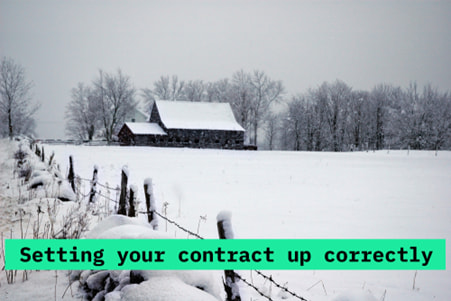
3| Analysing historical weather data to get the most accurate time risk allowance into your bid, something you don’t do very well today
Ultimately having the correct and most appropriate amount of time risk allowance in the project contract is the best way to mitigate weather risk in your construction bid. It’s not always possible to include the full amount of risk as you must stay competitive, but by analysing your plan alongside climate adjusted weather data you can get a highly accurate number of potential weather days.
This beats just looking at some average weather data. If you can get some data and examine the thresholds at which certain activities are impacted and then simulate how likely those thresholds are to occur, you can get a time risk allowance number that will leave you with healthy margins whilst being appropriate for the location. If you can provide data and justification to your client about how those numbers were reached then this could help them recognise that your offer is better value for money than an under-priced offer, which will inflate anyway as the delays build up.
The only tool you can really do this analysis on today is the EHAB platform. It is unique in its ability to analyse every line of your plan and run a robust simulation to assess potential downtime to be used during construction bidding. It also offers the ability to integrate back into other software, so in the case you are doing a QSRA then you can conduct a state of the art assessment that will be as close to reality as possible. Having this level of analysis in your bid process enables your price to be as streamlined as possible whilst still giving you the margin you require.

4| Putting this data to work against your plan so you can spot the best mitigation strategies for you and your client
An additional thing this type of data analysis can provide is the ability to make clear decisions about mitigation early on in the planning process. If the project you are bidding on has strict end date requirements and you have found that there is no way to finish on time with the schedule of works you have initially proposed, then you will need to provide mitigation options.
Being able to run a what if scenario to examine multiple types of mitigations, their costs and the eventual impact on the end date would be a key way to de-risk your bid. It will require you to have an analysis tool integrated into your plan and it will have to allow you to run multiple plans at the same time, but if you can complete this it will give you a powerful decision-making apparatus that you can use to help you and your client make the best decision for the project budget and end date.
A bid package that has already started to offer choice about how certain weather risks will be avoided is certainly a compelling offer for any client.
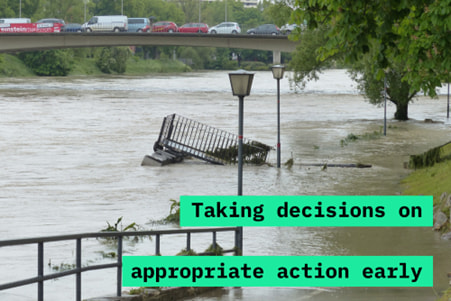
5| Widening your analysis past the site to spot any bottlenecks caused on transport links by weather
If you have gotten to this step and you are still searching for ways to de-risk your bid, then you have already probably done quite a lot! Transportation of people and goods to site is an often-overlooked risk. You might have a key port, or key road that is the main thoroughfare through which your resources arrive on site. Have you ever thought about what would happen if there were severe delays on that transport corridor?
If you can identify your key transport links and then understand if there are any that are in flood zones, or if there are any that have the potential to have fog or high waves, then these things could be cause for concern.
Mapping these risks on Google Earth or other kinds of GIS systems can help you understand these risks as well as helping your clients recognise where key weaknesses in the plan could be. These types of risks may be very unlikely to happen but they could cause significant impact on the schedule as it may prevent any work from happening, or key critical works from occurring. This makes this type of exercise something that should not be excluded lightly.
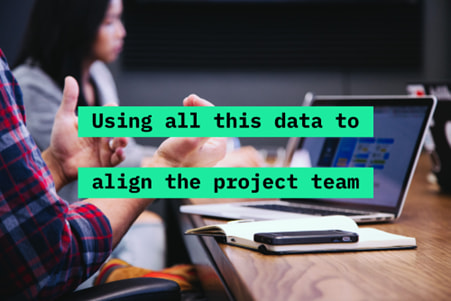
6| Your data and project delivery method must be presented in a way which all stakeholders can understand to minimise disagreements and disputes
In every project there is always a risk that the project team delivering the construction project will have a dispute. Setting up your project for success from day one is key and data is imperative to this setup process. In all of the aforementioned items where leveraging data has helped de-risk a bid, making sure the information is accessible to everyone on the team is crucial.
There is much science behind many of these actions I have mentioned but it is critical that when they’re included in the bid, they are done so in simple language or with visuals that need no explanation.
If you can do this then you will be able to make sure the project team is aligned and alert to the weather and climate risks that the project will experience. The EHAB platform offers simple to understand reports and shareable graphs and tables that can be included in your bid. These are also intended to help keep you aligned throughout the project as you have risk meetings that have frank discussions about the risks being encountered on the project.
Bidding in construction is a process that can often take a lot of time and resource, with no guarantee of success in the end. This means you need to get as much value and detail into your bid with the lowest possible effort. The EHAB platform is designed to get you the best weather and climate insights at a fraction of the time it would take you to do by hand, and at a fraction of the cost that it might take a specialist consultant to produce the same results.
We are currently offering new companies 10 free bids as part of our effort to make the construction industry more climate resilient. If you feel that your organisation would benefit from exploring our capabilities, then please reach out to us.
If you feel I have missed an obvious and critical item off my list then I’d love to hear the suggestion! I will update this list as we encounter more instances where data can help de-risk the construction bidding process.



